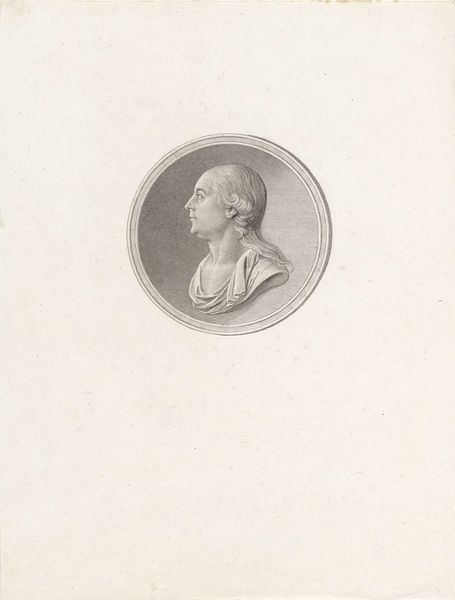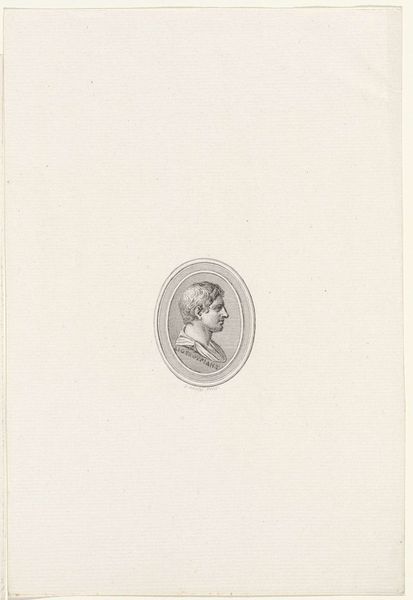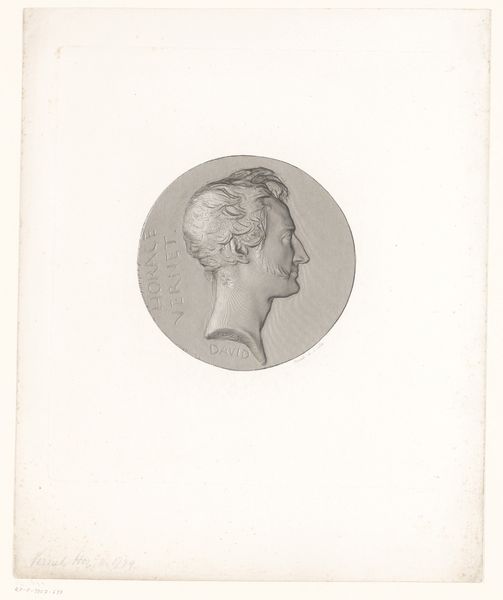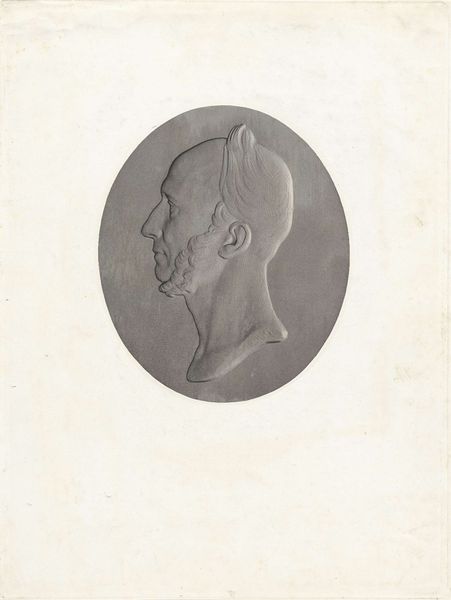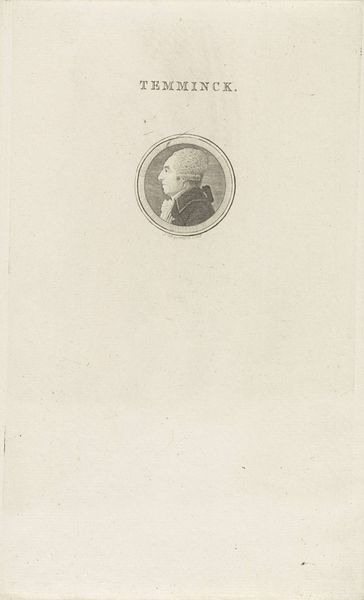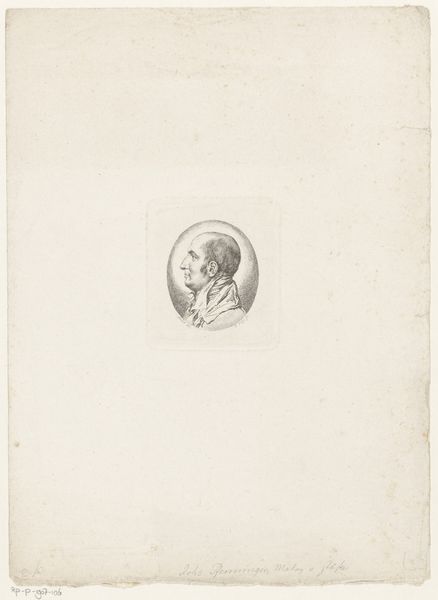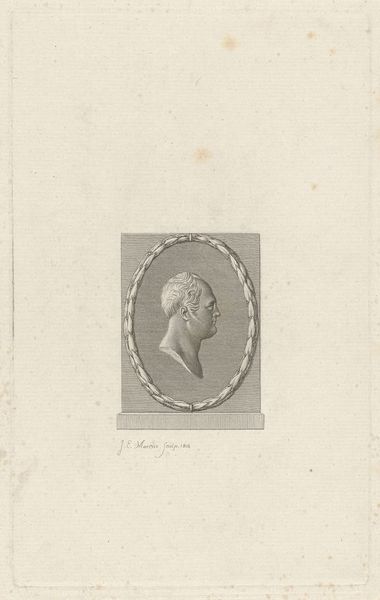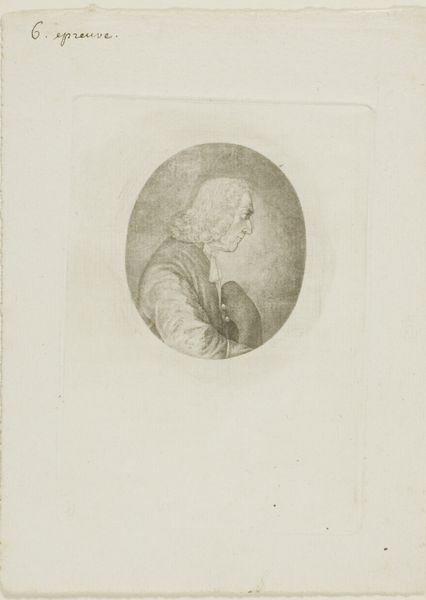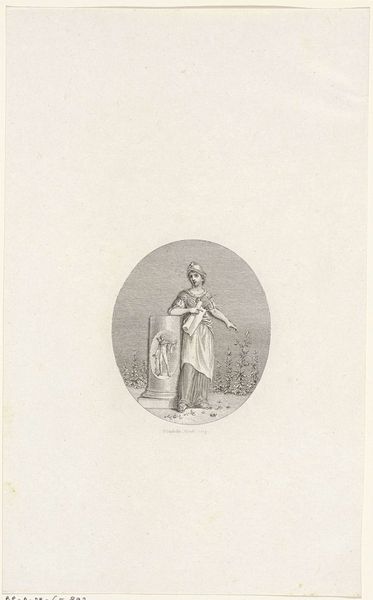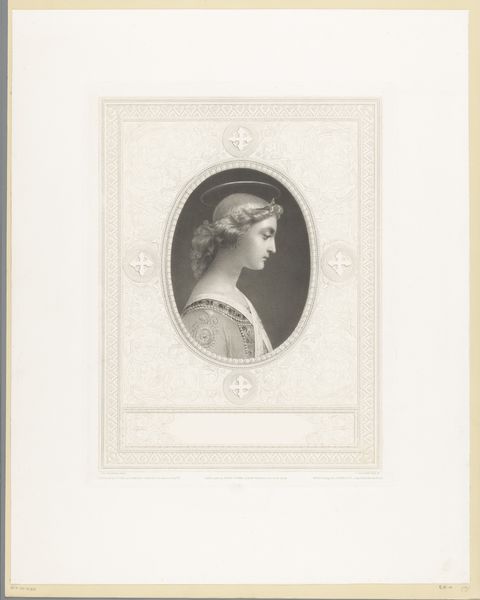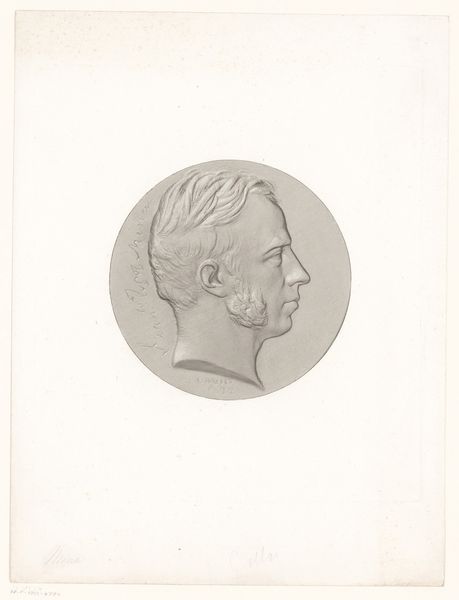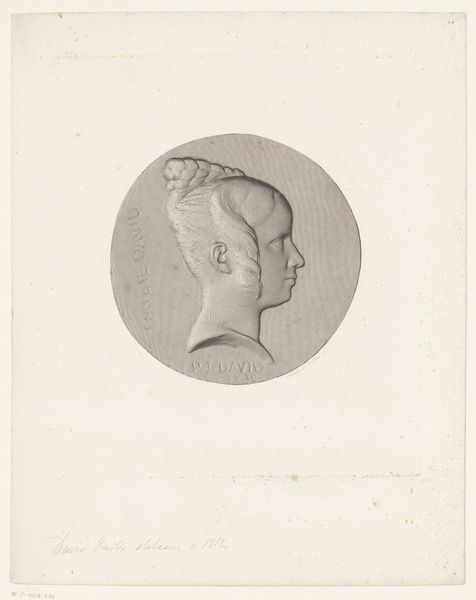
engraving
#
portrait
#
neoclacissism
#
old engraving style
#
form
#
line
#
academic-art
#
engraving
#
realism
Dimensions: height 275 mm, width 205 mm
Copyright: Rijks Museum: Open Domain
Curator: Looking at this portrait, my immediate reaction is one of coolness and formality. There’s a stark, almost classical quality to it. Editor: Indeed. What we’re observing is "Portret van Jan Hendrik van Kinsbergen", crafted between 1806 and 1816 by Reinier Vinkeles. It is currently held in the Rijksmuseum. The medium is engraving. Curator: Engraving – a precise, laborious process. Considering that, the clear lines make sense. It’s an academic style, certainly, with a nod to neoclassicism in the idealized form and composition, resembling a Roman medallion. I wonder about the consumption of these kinds of images at the time. Were they mass-produced for a wide audience, or were they more exclusive items? Editor: Good question. Notice how the depiction employs line and form with striking realism, almost trying to capture not just likeness but something of his spirit in the stark, precise detail. We are compelled to ponder the historical Jan Hendrik van Kinsbergen: what symbols were intentionally incorporated or unintentionally apparent? What was he really like? Curator: Absolutely, the artist uses realism to make him feel like a powerful and important person. It prompts questions about the visual language employed to convey status during that era. For instance, how does this portrait, through its artistic techniques and modes of display, serve as a tool for constructing and maintaining social hierarchies? Editor: I see so many levels here: from the neoclassical style evoking the legacy of republics of the past to the individualized detail of Kinsbergen's gaze. All speak of cultural memory, hinting at aspirations of enlightenment and progress of that time period. Curator: Precisely. And looking at the final image, one cannot avoid questions about value: Why were engravings preferred at times versus, say, painting? What types of labor went into creating this artifact, from the artist to the engravers? Editor: Reflecting on this piece, it is so interesting to consider both the personal history embedded within its subject and its engagement with a long tradition of symbolic portraiture. Curator: Agreed. By examining its physical existence as a carefully produced object we gain some insight into how artistic output reflected the priorities of this fascinating era.
Comments
No comments
Be the first to comment and join the conversation on the ultimate creative platform.
